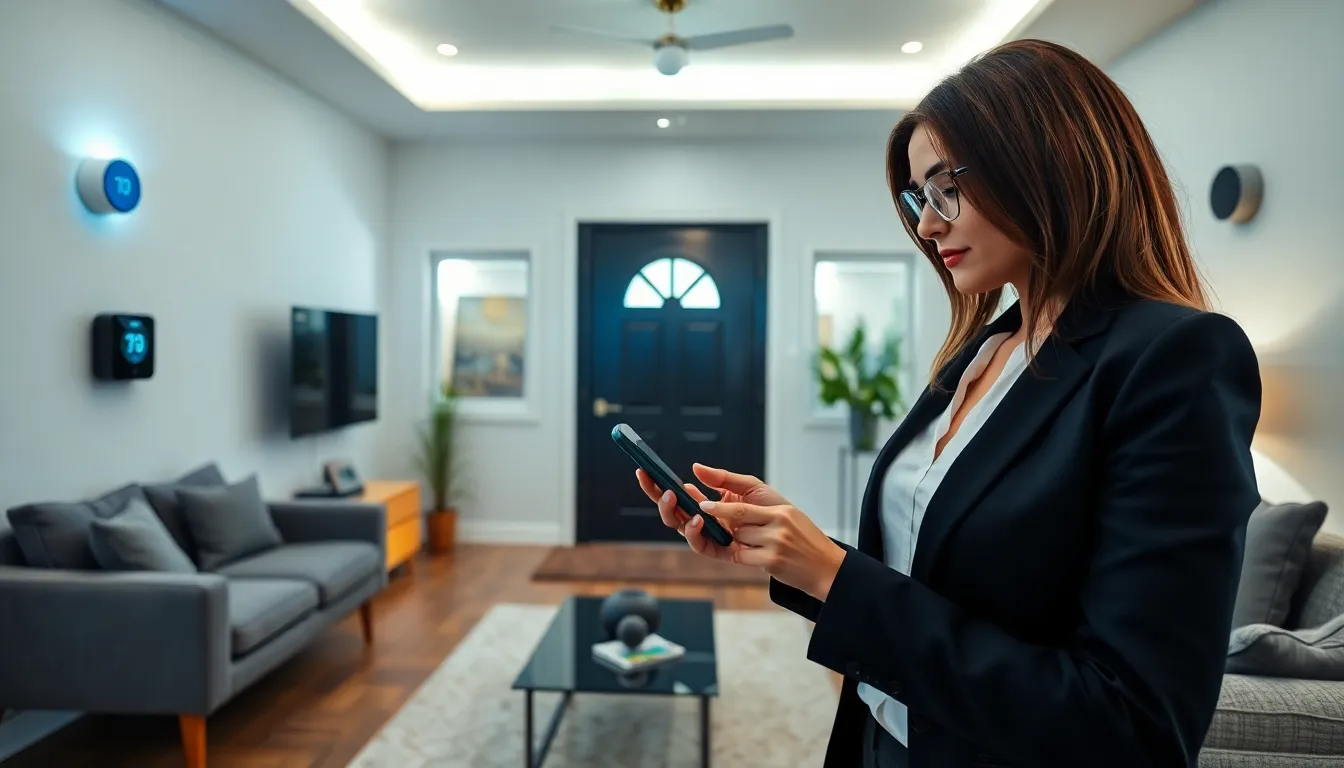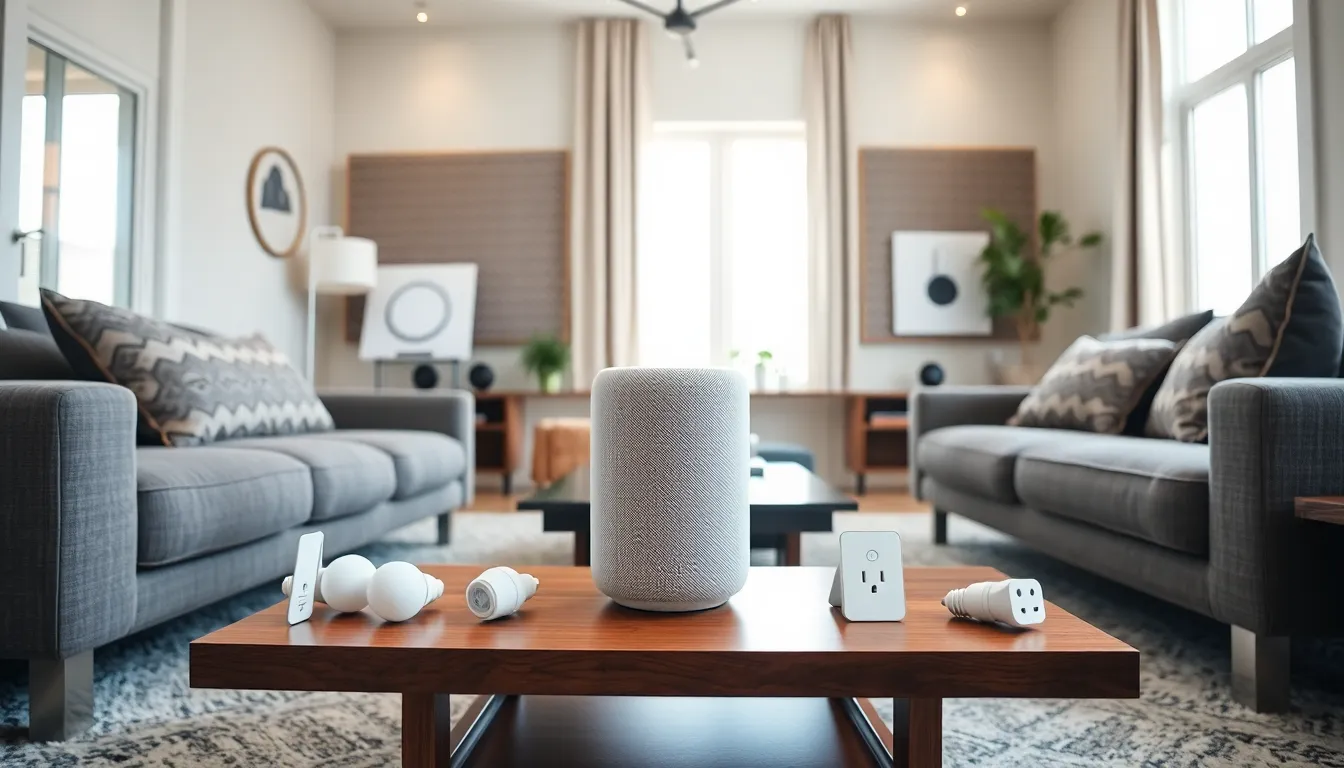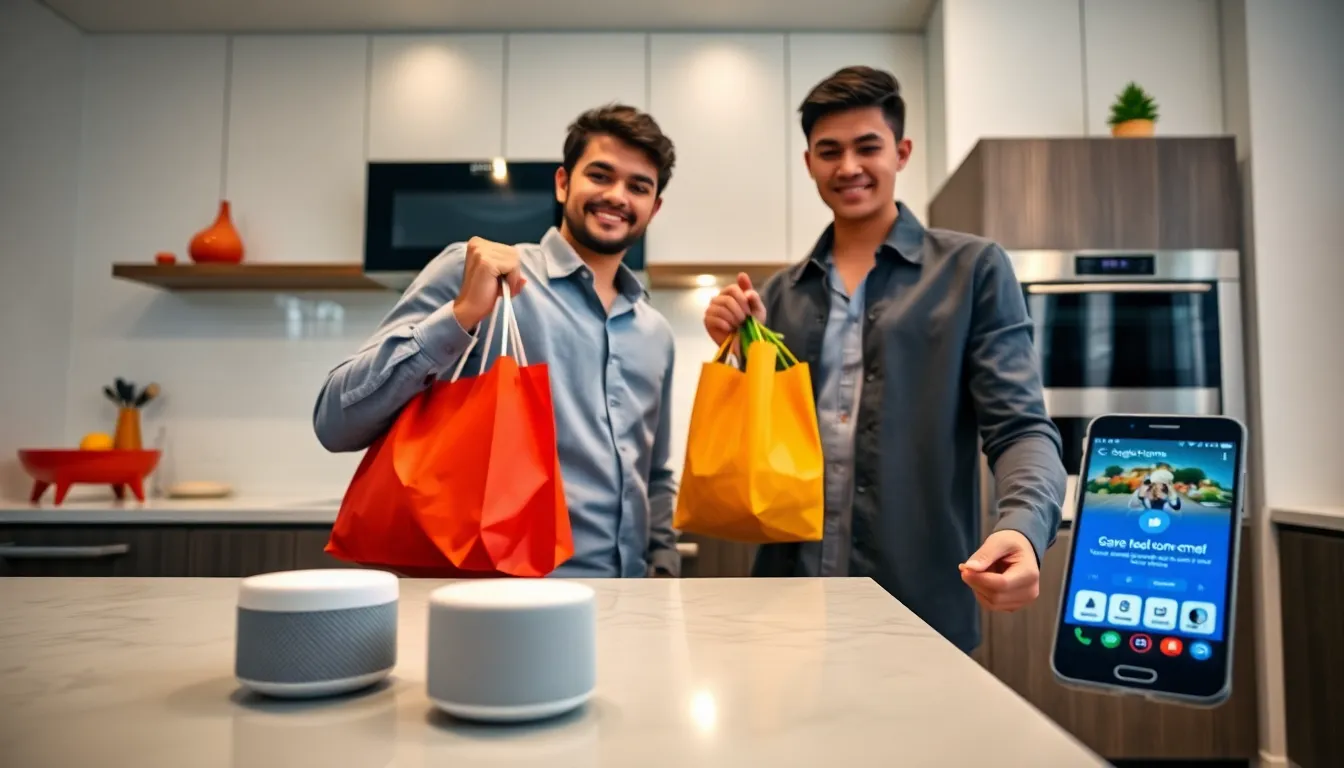Imagine walking into your home and feeling like a tech-savvy wizard. With home assistant integration, that dream can become a reality. Gone are the days of fumbling with remotes and juggling multiple apps. Now, your devices can communicate like old friends, making your life smoother and more efficient.
Table of Contents
ToggleOverview of Home Assistant Integration
Home Assistant integration centralizes smart devices, enabling efficient communication within the home. Users control various devices through a single platform, enhancing convenience and usability. Devices from different brands interoperate seamlessly without compatibility issues.
Automation features create scenarios that improve energy management. For example, lights can dim when a television turns on, conserving energy and enhancing comfort simultaneously. Security systems also benefit, allowing cameras and alarms to work in unison, providing peace of mind.
The flexibility of Home Assistant integration supports voice commands through popular assistants. Smart speakers connect effortlessly, enabling hands-free control of lights, thermostats, and entertainment systems. This voice interaction simplifies daily tasks, making the home more user-friendly.
Customizable dashboards present vital information at a glance. Homeowners can monitor energy usage, security alerts, and device statuses from one screen. Custom interfaces allow for personalized layouts, catering to individual preferences or family needs.
Integrating Home Assistant with third-party platforms broadens functionality. Various cloud services, like IFTTT and webhooks, enable automation beyond home devices. Such connections allow for notifications or alerts on smartphones, keeping users informed of any essential updates.
Data security also ranks high in importance. Home Assistant ensures user privacy with local processing options, reducing reliance on cloud-based systems. This approach minimizes potential data breaches, enhancing the overall security of home automation systems.
Improving the home experience through integration fosters not only efficiency but also comfort and security. Home Assistant stands out as a powerful solution for modern living, streamlining how devices interact and enhancing overall quality of life.
Benefits of Home Assistant Integration
Home assistant integration offers numerous advantages that enhance daily living. It revolutionizes how devices interact, making home management effortless and efficient.
Enhanced Smart Home Experience
Devices work smoothly together, creating a cohesive smart home environment. Users can control lights, thermostats, and security cameras from one central app. This simplicity eliminates the clutter of multiple remotes and apps. Real-time communication between devices improves overall functionality. For instance, adjusting the thermostat automatically when someone arrives home optimizes comfort. Installation of updates happens seamlessly in the background, maintaining system efficiency. Greater compatibility with various smart home gadgets enables users to expand their systems easily.
Improved Automation Capabilities
Automation features transform homes into responsive living spaces. Tasks like scheduling lights to turn on at sunset increase convenience. Users can create routines, such as “Good Morning” sequences that adjust multiple settings with one command. Security cameras can notify homeowners of unusual activity and integrate with alarm systems for immediate action. Notifications for system status or device alerts keep users informed. Custom scripts offer further personalization, enabling unique automations tailored to individual needs. Overall, enhanced automation capabilities streamline daily life and increase safety.
Popular Integrations with Home Assistant
Home Assistant supports various integrations that enhance a smart home’s functionality. Popular options provide convenience and improve user experience across several aspects of home management.
Smart Lights
Smart lights offer increased control and flexibility. Users can adjust brightness levels or change colors directly through Home Assistant. Many smart light brands like Philips Hue and LIFX easily integrate, allowing for automation and scheduling. Dimming lights when a user activates a movie mode creates an engaging atmosphere. Additionally, they can sync with security routines or respond to occupancy detection, improving energy efficiency.
Security Systems
Security systems enhance home protection by integrating with Home Assistant. Popular brands like Ring and Arlo provide seamless connectivity. Users receive instant notifications for unusual activity, boosting peace of mind. Automated routines can arm the system at specific times or when no one is present. Cameras can stream live footage directly to a user’s dashboard, increasing surveillance. Furthermore, integrating smart locks allows remote access and monitoring, providing comprehensive security.
Thermostats
Smart thermostats streamline energy management within Home Assistant. Devices such as Ecobee and Nest adapt based on user habits, maintaining optimal temperatures. Aside from manual adjustments, automation can occur through sensors that detect occupancy. Scheduling based on weather forecasts promotes efficient heating and cooling operations. When integrated into the system, users can control temperatures remotely or receive alerts about energy consumption. This focus on efficiency significantly reduces energy costs.
Setting Up Home Assistant Integration
Setting up Home Assistant integration streamlines device communication and enhances smart home functionality. Follow these guidelines for efficient integration.
Step-by-Step Guide
- Install Home Assistant: Begin by downloading the latest version of Home Assistant from the official website.
- Connect Devices: Navigate to the Integrations page in Home Assistant to find and connect compatible devices.
- Configure Automations: Utilize the automation interface to create custom routines, adjusting settings for each device to suit preferences.
- Set Up Voice Assistant: Link your preferred voice assistant, ensuring it can control your devices through Home Assistant.
- Customize Dashboard: Organize your dashboard, allowing quick access to crucial device information and controls.
Common Troubleshooting Tips
First, ensure all devices are on the same Wi-Fi network, as connectivity issues often stem from network discrepancies. Restarting Home Assistant frequently resolves minor glitches. Check the logs for error messages; they’re helpful in diagnosing specific problems. Device compatibility can be an issue; refer to the Home Assistant documentation for a comprehensive list of supported products. Lastly, firmware updates for devices may resolve integration problems, so keeping them current is essential.
Future of Home Assistant Integration
Emerging trends in home assistant integration point toward even greater automation and connectivity. Developers focus on enhancing compatibility with a wider range of devices. Smart home ecosystems will evolve with advanced voice recognition and natural language processing technologies, allowing users to interact seamlessly. Increased use of artificial intelligence enables more intuitive automation that learns from user habits.
Collaboration among manufacturers also strengthens the smart home landscape. Open-source platforms become increasingly popular, offering flexibility and customization. Users benefit from open-source solutions that encourage community-driven improvements. This collaboration encourages interoperability, enabling devices from different brands to communicate effortlessly.
Enhanced data privacy and security measures will emerge in response to growing concerns. Home Assistant, for example, implements local processing for data management, reducing reliance on cloud services. Consumers prioritize privacy; therefore, options that protect personal information will gain traction.
Energy efficiency remains a key focus in the development of smart home technology. Integration of energy monitoring tools enables users to optimize consumption. Innovative features will automate energy-saving routines, like adjusting temperatures based on occupancy patterns.
Sustainability initiatives will influence device selection and future developments. Manufacturers will prioritize eco-friendly appliances that align with smart home integration strategies. Home assistants will evolve into central hubs for maintaining and optimizing a sustainable living environment, making green living more accessible.
User experiences will improve through the introduction of more user-friendly interfaces. Customizable dashboards will provide personalized insights, making management straightforward. Future integrations will incorporate enhanced notifications and alerts that keep homeowners informed about their smart systems.
Home assistant integration stands as a game-changer in smart home technology. By centralizing control and enhancing automation, it simplifies daily routines while improving energy efficiency and security. With the ability to connect various devices seamlessly, users can enjoy a more cohesive living environment tailored to their needs.
As technology continues to evolve, the future of home assistant integration looks promising. Innovations in AI and improved compatibility will further enhance user experiences. Embracing these advancements not only elevates comfort and convenience but also supports a sustainable lifestyle, making smart home integration an essential aspect of modern living.








